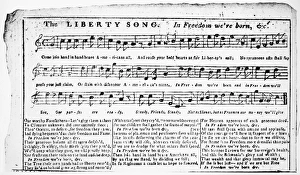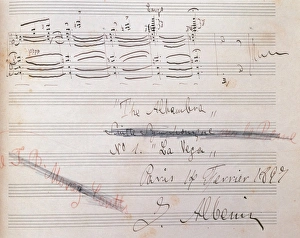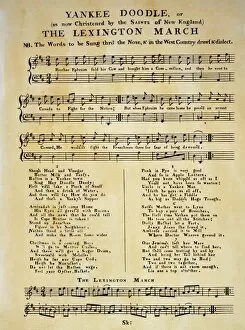Musical Note Collection (page 4)
"From the haunting melodies of Mozart's Requiem to the explosive energy of Stravinsky's Rite of Spring
All Professionally Made to Order for Quick Shipping
"From the haunting melodies of Mozart's Requiem to the explosive energy of Stravinsky's Rite of Spring, musical notes have the power to transport us through time and emotions. Take a glimpse into the world of classical music with these captivating hints: - The last page of Stravinsky's Rite of Spring score, a revolutionary masterpiece that caused uproar during its premiere. - Richard Wagner's Gotterdammerung, an epic opera showcasing his grandiose compositions. - Beethoven's manuscript from 1806, revealing the beginning of the final movement in his String Quartet in C Major. - Brahms' orchestral score for Symphony No. , displaying his meticulous attention to detail and rich harmonies. - Ludwig van Beethoven's sketches for his Ninth Symphony, featuring quotes from Schiller’s Ode to Joy - a testament to his genius creativity. - A precious manuscript by Wolfgang Amadeus Mozart containing Ave Verum Corpus (K), showcasing his divine talent as an Austrian composer. - An intricate detail from Johann Sebastian Bach’s Cantata No. , demonstrating his mastery in composing complex choral works. - The Guidonian Hand developed by Guido d Arezzo, providing singers with a visual aid to read music notation effectively. - The first printed sheet music edition of Francis Scott Key’s Star Spangled Banner, highlighting a misprint in its subtitle but not diminishing its patriotic significance. - An angelic figure with halo and butterfly wings playing harp reminds us that music can be heavenly and ethereal. Lastly, Ludwig van Beethoven’s poignant question "Must it be? It must be, " adorning the beginning of the fourth movement in his String Quartet Op. 135 – reflecting both personal struggles and artistic triumphs. These glimpses into musical history remind us that each note carries within it stories untold; they are windows into composers' souls.
















































